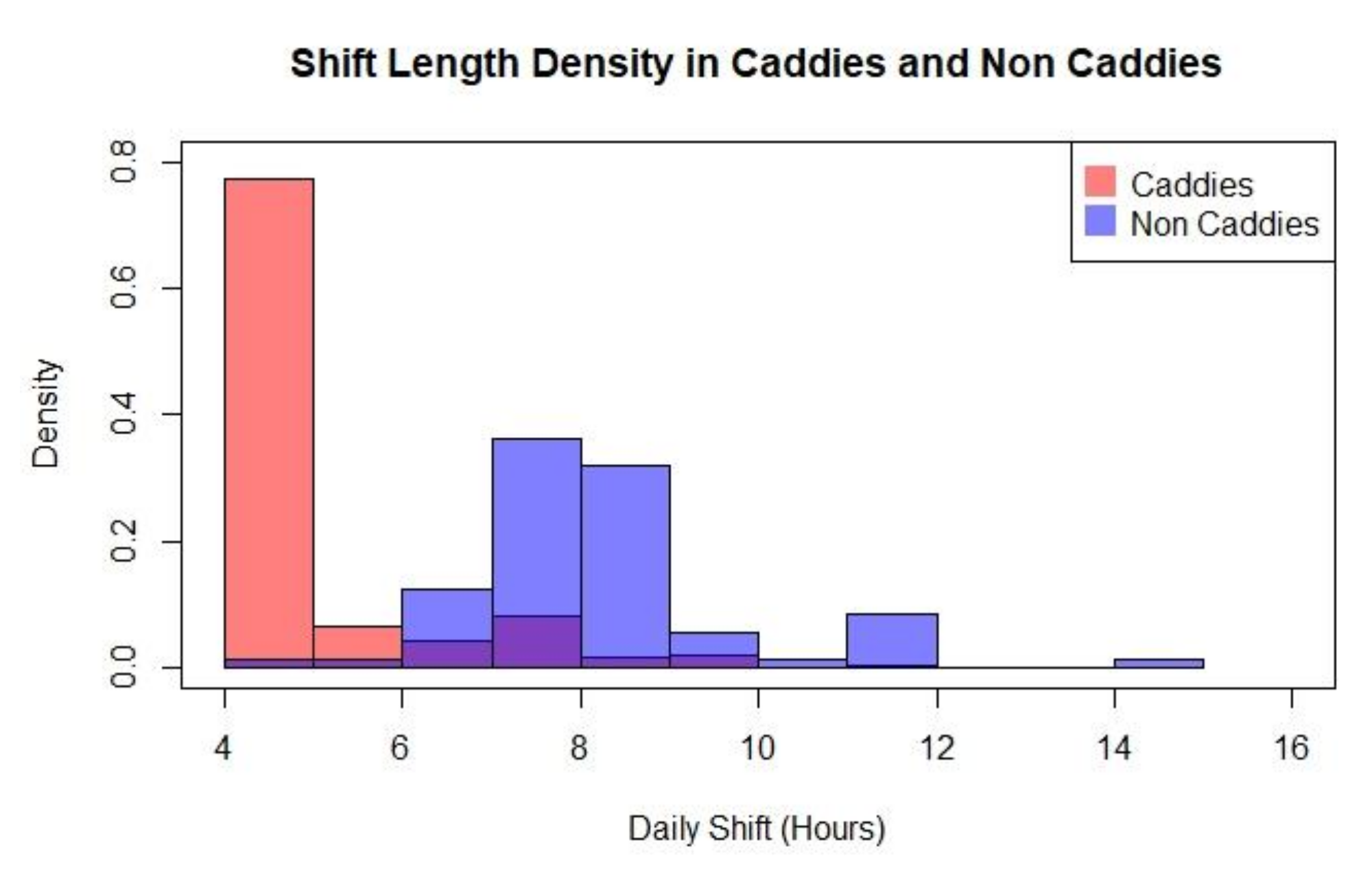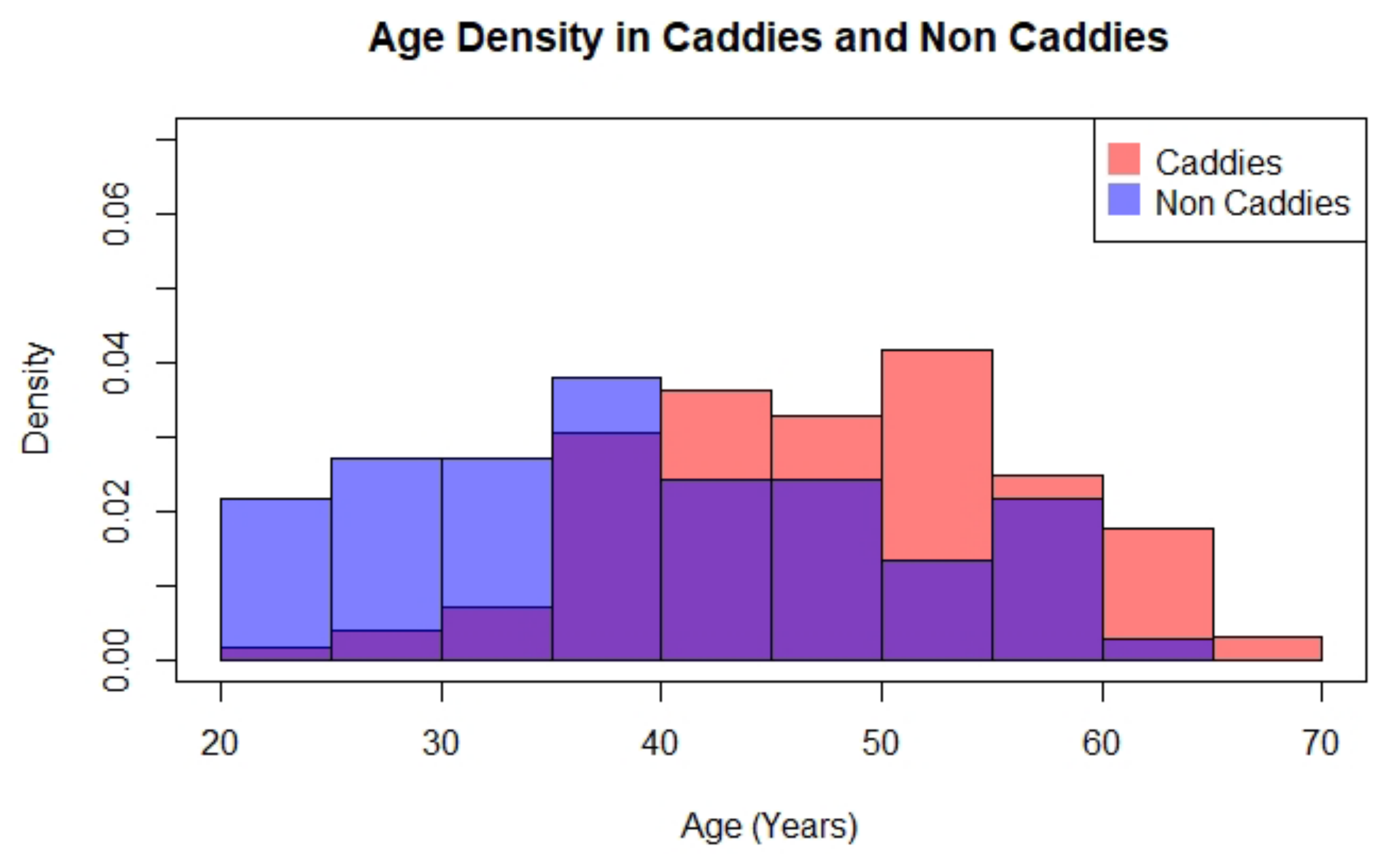Work Related Musculoskeletal Pain in Golf Caddies—Johannesburg, South Africa
Abstract
1. Introduction
2. Materials and Methods
2.1. Participants
2.2. Measurements
2.3. Data Analysis
3. Results
3.1. Sample Demographics, Health Behaviours, and Job-Related Factors
3.2. Analytic Comparisons
3.3. Logistic Regression Models
4. Discussion
5. Conclusions
Author Contributions
Funding
Acknowledgments
Conflicts of Interest
References
- De Klerk, B.; Haarrhoff, R. The green game: Investigating golf management practices. Afr. J. Hosp. Tour. Leis. 2014, 3, 2–2014. [Google Scholar]
- KPMG Golf Advisory Practice. Summary Report: Benchmark Indicators and Performance of Golf Courses in the Europe, Middle East and Africa Region. Golf Benchmark Survey 2007. Available online: http://www.stavebne-forum.sk/events2008/prezentacie/borak_0626.pdf (accessed on 10 November 2019).
- Naicker, N.; Kootbodien, T.; Wilson, K.; Made, F. Working Conditions and Health Outcomes of Caddies Working in Golf Courses in the City of Johannesburg; National Institute of Occupational Health: Johannesburg, South Africa, 2019; p. 12. Available online: http://www.nioh.ac.za/wp-content/uploads/2019/05/Caddy-Report-Approved-Final.pdf (accessed on 10 November 2019).
- Jun, H.; Lee, J.E.; Kim, J. Predicting job stress: A specific case of a female golf caddy in South Korea. Work 2013, 45, 183–189. [Google Scholar] [CrossRef]
- Crawford, J.O. The Nordic Musculoskeletal Questionnaire. Occup. Med. 2007, 57, 300–301. [Google Scholar] [CrossRef]
- Murray, C.J.; Vos, T.; Lozano, R.; Naghavi, M.; Flaxman, A.D.; Michaud, C.; Ezzati, M.; Shibuya, K.; Salomon, J.A.; Abdalla, S.; et al. Disability-adjusted life years (DALYs) for 291 diseases and injuries in 21 regions, 1990–2010: A systematic analysis for the Global Burden of Disease Study 2010. Lancet 2013, 380, 2197–2223. [Google Scholar] [CrossRef]
- Paver, R.; Rothman, S.; van den Broeck, A.; de Witte, H. Labour market interventions to assist the unemployed in two townships in South Africa. SA J. Ind. Psychol. 2019, 45, a1596. [Google Scholar] [CrossRef]
- Rischewski, D.; Kuper, H.; Atijosan, O.; Simms, V.; Jofret-Bonet, M.; Foster, A.; Lavy, C. Poverty and musculoskeletal impairment in Rwanda. Trans. R. Soc. Trop. Med. Hyg. 2008, 102, 608–617. [Google Scholar] [CrossRef] [PubMed]
- Gosheger, G.; Liem, D.; Ludwig, K.; Greshake, O.; Winkelmann, W. Injuries and Overuse Syndromes in Golf. Am. J. Sports Med. 2003, 31, 438–443. [Google Scholar] [CrossRef] [PubMed]
- Tassiopoulos, D.; Haydam, N. Golf tourists in South Africa: A demand-side study of a niche market in sports tourism. Tour. Manag. 2008, 29, 870–882. [Google Scholar] [CrossRef]
- Inglis, P. The “Caddie Question”: Why the Golf Caddies of Bangalore Reject Formal Employment. J. Contemp. Ethnogr. 2018, 47, 579–608. [Google Scholar] [CrossRef]


| Demographics | N (%) Mean ± SD (Range) | |
|---|---|---|
| Caddies (N = 249) | Non-Caddies (N = 74) | |
| N (%) | N (%) | |
| Age | 48.42 ± 9.23 (22 to 67) | 39.68 ± 10.96 (22 to 61) |
| Education | N = 244 | N = 71 |
| No School | 4 (1.64) | 1 (1.49) |
| Primary School | 55 (22.54) | 9 (12.68) |
| Secondary School | 165 (67.62) | 55 (77.46) |
| Tertiary School | 20 (8.19) | 6 (8.45) |
| Primary Income | N = 249 | N = 73 |
| Yes | 188 (75.50) | 53 (72.60) |
| No | 61 (24.50) | 20 (27.40) |
| Number of Dependents | 4.04 ± 2.54 (0 to 23) | 4.20 ± 2.44 (0 to 14) |
| Monthly Income (RAND) | 2849.43 ± 2506.88 (100–20,000) | 5729.17 ± 5312.5 (100–40,000) |
| Health Indicators | ||
| Chronic Illness | N = 249 | N = 74 |
| Yes | 108 (43.37) | 29 (39.19) |
| No | 141 (56.63) | 45 (60.81) |
| Height | 63.70 ± 12.31 (41.8–121.6) | 67.41 ± 11.89 (42.0–91.9) |
| Weight | 168.77 =/ −7.97 (145.0–191.0) | 167.90 =/ −8.59 (152.0–187.0) |
| BMI | 22.39 ± 4.09 (14.8–39.7) | 23.84 ± 3.40 (17.0–31.9) |
| Job-Related Factors | ||
| Hours Worked Daily | 5.05 ± 1.56 (4 to 12) | 8.69 ± 1.62 (4 to 15) |
| Days Worked a Week | 3.82 ± 1.38 (1–7) | 5.5 ± 1.04 (2–7) |
| Caddy Coefficient | Standard Error | p-Value | Odds Ratio (95% CI) | Sample Size | |
|---|---|---|---|---|---|
| Neck Pain | 1.19 | 4.92 | 0.015 | 3.29 (1.28, 8.89) | 291 |
| Arm Pain | 1.0 | 0.49 | 0.027 | 2.95 (1.15, 7.86) | 292 |
| Leg Pain | 1.04 | 0.4 | 0.019 | 2.83 (1.20, 6.89) | 294 |
| Back Pain | 0.87 | 0.43 | 0.045 | 2.39 (1.03, 5.70) | 293 |
© 2020 by the authors. Licensee MDPI, Basel, Switzerland. This article is an open access article distributed under the terms and conditions of the Creative Commons Attribution (CC BY) license (http://creativecommons.org/licenses/by/4.0/).
Share and Cite
Garnett, J.; Made, F.; Tlotleng, N.; Wilson, K.; Naicker, N. Work Related Musculoskeletal Pain in Golf Caddies—Johannesburg, South Africa. Int. J. Environ. Res. Public Health 2020, 17, 3617. https://doi.org/10.3390/ijerph17103617
Garnett J, Made F, Tlotleng N, Wilson K, Naicker N. Work Related Musculoskeletal Pain in Golf Caddies—Johannesburg, South Africa. International Journal of Environmental Research and Public Health. 2020; 17(10):3617. https://doi.org/10.3390/ijerph17103617
Chicago/Turabian StyleGarnett, Jennica, Felix Made, Nonhlanhla Tlotleng, Kerry Wilson, and Nisha Naicker. 2020. "Work Related Musculoskeletal Pain in Golf Caddies—Johannesburg, South Africa" International Journal of Environmental Research and Public Health 17, no. 10: 3617. https://doi.org/10.3390/ijerph17103617
APA StyleGarnett, J., Made, F., Tlotleng, N., Wilson, K., & Naicker, N. (2020). Work Related Musculoskeletal Pain in Golf Caddies—Johannesburg, South Africa. International Journal of Environmental Research and Public Health, 17(10), 3617. https://doi.org/10.3390/ijerph17103617





